
One of the lightest and fluffiest cake coverings is an old-fashioned favorite called boiled icing or "seven-minute" icing. It's a fat-free form of icing, glossy and snowy-white, made from whipped egg whites sweetened and stabilized with a hot syrup of sugar and water. It's easy to make with a bit of practice and a good candy thermometer, but there are a few potential glitches to avoid.
Syrup Becomes Grainy
This is one of the most common problems when you're cooking up the sugar syrup for your icing. It will be simmering away merrily and then suddenly become grainy and filled with large crystals of sugar. That's because you boiled away much of the water, and when the sugar reaches a certain concentration, it tries to precipitate out of the mixture. To avoid this, most recipes add either corn syrup or an acidic ingredient to the sugar. Corn syrup, honey and glucose are all "invert" or liquid sugars and help keep the sugar from crystallizing. Adding a splash of lemon juice or a pinch of cream of tartar does the same by inverting your regular sugar.
Hard Lumps in the Icing
Sometimes, a batch of boiled icing will be almost perfect except for a number of hard lumps in the finished product. Those are also caused by the sugar syrup, but for a different reason. When you pour the sugar syrup into your bowl, it should be in a thin stream so it mixes readily with the egg whites. If you pour in too much at a time, there's a risk it will puddle at the bottom of the bowl just long enough to solidify. This also happens if you pour sugar down the side of the bowl. Aim for a spot halfway between the bowl's edge and its middle, where the syrup can be easily incorporated.
Lumps of Egg White
If you pour your sugar syrup into the bowl too quickly, you also run the risk of overheating and cooking part of the egg whites. You'll see this as small, leather lumps scattered through the icing. Pouring your sugar syrup in a fine stream can help you avoid this difficulty, as well.
Icing Quickly Loses Volume
A well-made batch of boiled icing creates a light, fluffy marshmallow-like foam that should hold its shape for an extended period. That's because the hot sugar syrup gently heats the egg whites, cooking and pasteurizing them. The cooked, sweetened egg whites hold their shape and volume without sagging and deflating as you'd expect with uncooked egg whites. If your icing fails to do this, you probably didn't cook the sugar syrup to the correct temperature. Get a better candy thermometer, and heat the syrup to 240 degrees Fahrenheit before adding it to your mixture.
Food Safety
In theory, adding the hot sugar syrup should raise the temperature of your egg whites to 160 F and leave them food safe. In practice, that might not be the case, and your boiled icing has the potential to make people ill. To produce a safe boiled icing, start with pasteurized egg whites from the refrigerator section of your supermarket. Alternatively, you can use powdered egg whites or even instant meringue powder, both of which are pasteurized during processing and are safe.
Related Articles

What Is Agave Syrup?
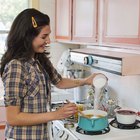
How to Make Liquid Sugar Concentrate
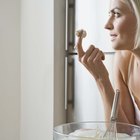
Can You Color Boiled Icing?

How to Stiffen Meringue

How to Make Hard Crack Candy
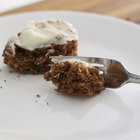
How to Keep a Cake Moist With Simple ...

The Best Frosting for Making Roses

Do Boston Cream Pie Cupcakes Need ...
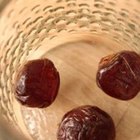
How to Make Sugar Wax?
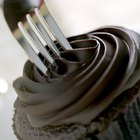
How to Fix Grainy Whipped Ganache
Can You Freeze Granulated Sugar?
How to Soften Crystalized Molasses

How to Get Tub Frosting to Harden

How to Troubleshoot Seven Minute ...
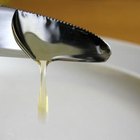
Does Corn Syrup go Bad?

How to Make Lactose Free Icing

How Long Can Buttercream Frosting Sit ...

How to Make Ring Pops

How to Fix Lumpy Buttercream Frosting

How to Make Whipped Frosting Without ...
References
- The Professional Pastry Chef; Bo Friberg
- The American Woman's Cookbook, Wartime Victory Edition; Ruth Berolzheimer (Ed.)
Writer Bio
Fred Decker is a trained chef and prolific freelance writer. In previous careers, he sold insurance and mutual funds, and was a longtime retailer. He was educated at Memorial University of Newfoundland and the Northern Alberta Institute of Technology. His articles have appeared on numerous home and garden sites including GoneOutdoors, TheNest and eHow.
Photo Credits
Jupiterimages/BananaStock/Getty Images